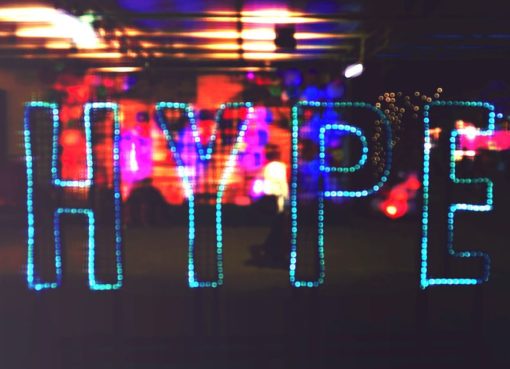Timeline of the Collapse:
-In the early morning of May 8, to prepare for the 4Crv Pool, Luna Foundation Guard (LFG), a Singapore-based non-profit that maintains the Terra network, removed $150 million worth of UST from the UST-3Crv Pool. At this time, the TVL of the pool was around $700 million. In other words, it cost only about $300 million to drain this pool.
– To keep the balance of liquidity in the UST-3Crv Pool, LFG removed another $100 million worth of UST from the pool.
– On the evening of May 8, WhaleTrades, a whale alert account on Twitter, began to “ring alarm bells” frantically: there was a tweet of selling millions of dollars’ worth of UST every hour.
– On the morning of May 10, Jump Trading and LFG may have sensed the problem and stopped selling their Bitcoin holdings to provide support for UST’s peg, letting things drift. As a result, UST plummeted all the way to $0.6.
– On May 11, UST seemed to be shorted by Soros-style short sellers, and has plummeted to a minimum of $0.2998 (source: CMC) after rounds of underselling.
It was a terrifying day on May 11: there seemed to be short sellers deliberately shorting UST and LUNA:
– While liquidity is being withdrawn from the UST-3Crv Pool as reserves for the 4Crv Pool, a single wallet dumped $350 million worth of UST on Curve, making UST lose its peg to the US dollar. In response, LFG sold BTC to keep the peg, and then the short seller dumped the rest UST on Binance.
– UST was seriously depegged, followed by a run on UST. LFG then came to the rescue with a plan to lend large amounts of BTC, only to cause a nosedive in BTC. Since new LUNA is minted by burning UST, the supply of LUNA has increased instead, resulting in its slump.
– The profit from short positions of BTC and LUNA of the short seller is estimated to exceed $1 billion, and the cost, mainly the UST dumped, is estimated to be within $200 million.
Impact on the LUNA Ecosystem
Considering the close relationship between projects in the Terra ecosystem and LUNA and UST as well as the reinvestments and profits of DeFi Legos, the UST depegging has dealt a heavy blow to both the LUNA-margined and UST-margined staking, DeFi, lending, margin, and other protocols and the prices. What’s worse, it even directly triggered the liquidation of protocols, pushing LUNA and UST into a secondary death spiral.
1. Anchor
As a decentralized savings protocol built on the Terra ecosystem, Anchor boasts a stable APY of 20%, which is its most prominent feature.
Influenced by the UST depegging, Anchor’s APY rests at 18.9%, but its total deposits plummeted to $3.99 billion from $14 billion last Friday, as suggested by Anchor’s Dashboard.
As a supplement to the Anchor and Terra ecosystems, Orion.Money is designed to facilitate the conversion of other stablecoins such as USDT and DAI into UST for earnings on savings in the Anchor ecosystem. Specifically, investors stake ORION and enjoy considerable returns with 10%, 15%, and 20% APYs. With the UST depegging, the stablecoin stakings on the Orion protocol have slumped by more than 50%.
2. Mirror
The synthetic assets in Mirror are all minted with UST as the main collateral to mirror various financial assets such as stocks and ETFs. Therefore, the investment demand for any U.S. stock-based synthetic assets in Mirror will eventually turn into the demand for UST, which creates the most important usage scenario for this stablecoin and provides value for UST and LUNA.
The TVL of the Terra chain on Mirror fell from $600 million to $240 million, a drop of 60%.
3. Lido and node staking
Lido, the largest liquidity staking protocol, started the Liquid Staking for Terra plan as early as last year, releasing the LUNA staked by nodes in the Terra ecosystem. The LUNA staked on Lido also witnessed a drop of about 60% as well as frantic underselling. As a result, the TVL of Terra’s staking in Lido dropped by 80% on May 11 alone, with a seven-day drop of a staggering 91%.
On the other hand, node staking directly affects the verification and security of the Terra network. For the time being, we haven’t observed a large number of nodes fleeing. Considering the UST depegging, more and more LUNA will be in circulation, pushing up the supply toward 1 billion.
4. Abracadabra
Abracadabra launched the Degenbox UST strategy. Users deposit UST tokens into the cauldron in order to either borrow MIM or leverage their position, thereby greatly improving returns. As long as UST remains at $1, this strategy is basically risk-free. However, once UST is depegged, users risk liquidations if their collateral devalues.
Currently, the Abracadabra protocol is moving all UST from the UST strategy on Terra back to Ethereum in response to current market conditions. It pays more attention to liquidity and potential liquidations.
Relevant Reserve Pools
Concerning the death spiral facing algorithmic stablecoins earlier this year, LFG created a reserve pool of Bitcoin and AVAX to support the value peg of the stablecoin UST.
Taking BTC as an example, let’s go deep into this mechanism: LFG originally intended to relieve the inflationary pressure using BTC. When traders exchange UST to LUNA on the chain, it reduces the new supply of LUNA to control the death spiral and make the entire system more resistant to risks. According to the on-chain mechanism proposed by Jump, 1 UST can be exchanged for $0.98 worth of BTC. If the UST price is lower than $0.98 for off-chain trades, traders can buy Bitcoin at a discount from the reserve. Such a variant of the AMM mechanism is called “The Defender”. Before the delivery price of UST exceeds $0.98, the best place to buy Bitcoin in the market is its reserve pool. This mechanism provides a hard support for the UST’s peg.
Neither BTC nor AVAX will be used as collateral. In fact, taking into account the fragility of algorithmic stablecoins, such a new mechanism was designed to peg the coins to stabler assets, which, to a certain extent, indeed hedges against selling. Despite the clever design, UST/LUNA cannot be redeemed in exchange for bitcoin on the chain for the time being. What’s worse, as UST struggles to maintain its $1 peg, LUNA holders suffer a confidence breakdown and get trapped in the death spiral.
LFG was forced to dip into its pile of bitcoin to support the token. According to the report, LFG has lent out $1.3 billion in BTC (28,205 bitcoins) to trading firms to hold UST’s price peg. But that was just a drop in the bucket. The rising interest rate and shrinking of balance sheet announced on May 10 have made things even worse. As the consistent inflow of established financial institutions into the crypto market for the recent years brings Bitcoin much closer to the US stock market, Bitcoin dropped below $30,000 in response to the collapse of the US stock and LFG’s big loans of bitcoin.
AVAX is another ecosystem that’s closely related to Terra. Do Kwon announced on April 8 that AVAX will be used to provide a reserve against UST, and crypto users will be able to mint UST on Avalanche. This is an attempt to add more use cases of UST through the many AVAX-powered projects. Meanwhile, the Avalanche ecosystem also needs a stablecoin of its own, which was why the two clicked right away. However, this seemingly perfect partnership also has its pitfalls. The working principle of AVAX and UST, similar to that of BTC that we mentioned earlier, is to form a virtual AMM pool where users who have earned UST on Avalanche’s C-Chain can swap $1 worth of AVAX for $1 worth of UST or convert $1 worth of UST into 99 cents’ worth of AVAX. It should be noted this asymmetric arbitrage design will only be tapped into when UST falls.
Fortunately, at the moment, AVAX cannot be directly used to mint UST. The AVAX reserve announced by Do Kwon only covers the 100 million AVAX acquired by LFG, a transaction that will be handled through the Avalanche Foundation in an over-the-counter (OTC) fashion. Details (e.g. the existence of any lock-up period and the specific price) of the deal remain unknown to the public. Compared to the nearly 99% plummet of LUNA, AVAX, which dropped by over 20% in value due to overall market impacts, has not been much affected. At the same time, the meltdown sounded the alarm for the entire public chain sector. Do all ecosystems need a stablecoin? NEAR, which launched its ecosystem-based stablecoin USN during its infancy, was more affected than AVAX, and the loss of market confidence led to a downfall.
Other Algorithmic Stablecoins
The crisis of confidence in stablecoins caused by the collapse of UST has extended to other stablecoin protocols, but this is also a good opportunity to test users’ confidence in other protocols and their underlying mechanisms.
No traces of large-scale depegging have been observed in decentralized stablecoins (except fiat-collateralized USDC, USDT, TUSD, etc.) before or after the collapse of UST (with the depegging threshold set to 5%). An exception is HARD Protocol’s USDX which saw a drop of about 8%. Even those partially collateralized like FEI and FRAX have not suffered severe depegging.
Unfortunately, UST has destroyed the market confidence in stablecoins, especially in those algorithmic stablecoins and stablecoin protocols that are not fully collateralized, e.g. FXS and SPELL.
Dynamics:
According to some sources, the LUNA meltdown could be masterminded by HF Citadel Securities, suggesting that this famous Wall Street player shorted the market by lending out 100,000 bitcoins, which crushed LUNA’s peg mechanism and resulted in a vicious spiral.
Do Kwon first sought help and tried to raise $1 billion by selling LUNA at a 50% discount, but the proposal was rejected.
He then announced Proposal 1164, which was passed with 35 voting in favor and 4 abstaining. The proposal mainly works to speed up the burning of UST. More specifically, it will increase the base pool from $50 million to $100 million in SDR and reduce the Pool Recovery Block from 36 blocks to 18, which will increase UST’s minting capacity from $293 million to $1.2 billion.
Massive traditional funds of many big Korean companies are stored at Terra, a Korean company focusing on fintech and payment, in the form of UST. Such assets will bring legal consequences. Compared with LUNA, which mostly affects crypto investors, UST involves more funds from non-crypto communities. In comparison, such funds come with greater responsibilities and more demanding legal provisions. If asked to choose only one from the two, LUNA will definitely be given up to ensure the value of UST. If no external funding can be relied on, the only way around is to keep minting LUNA to burn UST and to convert LUNA into more valuable assets (BTC/USDT), thereby stabilizing the UST peg. The stabilization of the UST peg via the continued exploitation of LUNA’s value is the only feasible way to save UST. As such, the LUNA price might continue to fall until the tragedy ends with the help of external funding.
In a word, LUNA has fallen from its pedestal.
As of this writing, the price of LUNA is $0.8, and the UST price is $0.68.
*The above cannot be relied on as any investment advice.


















